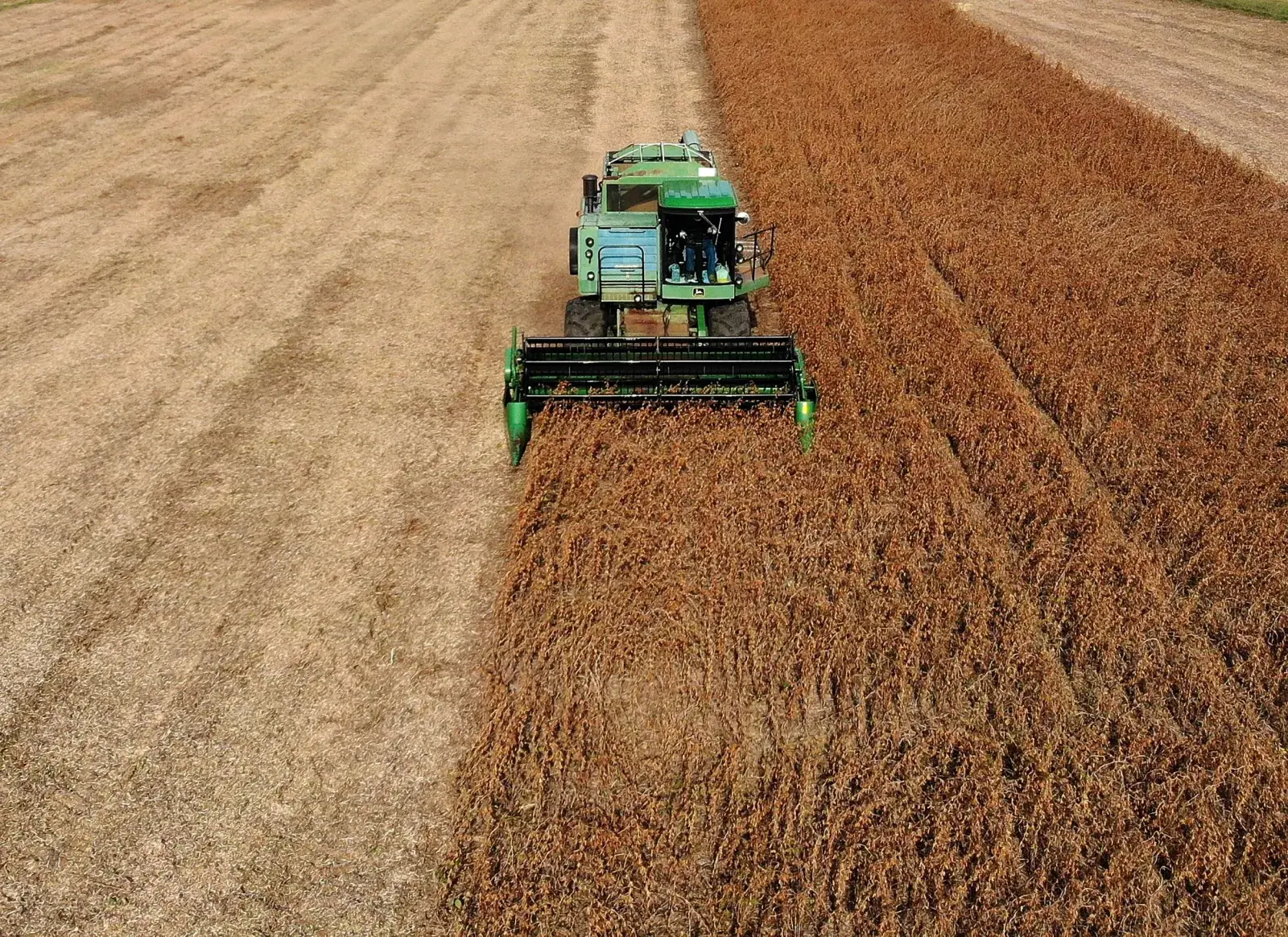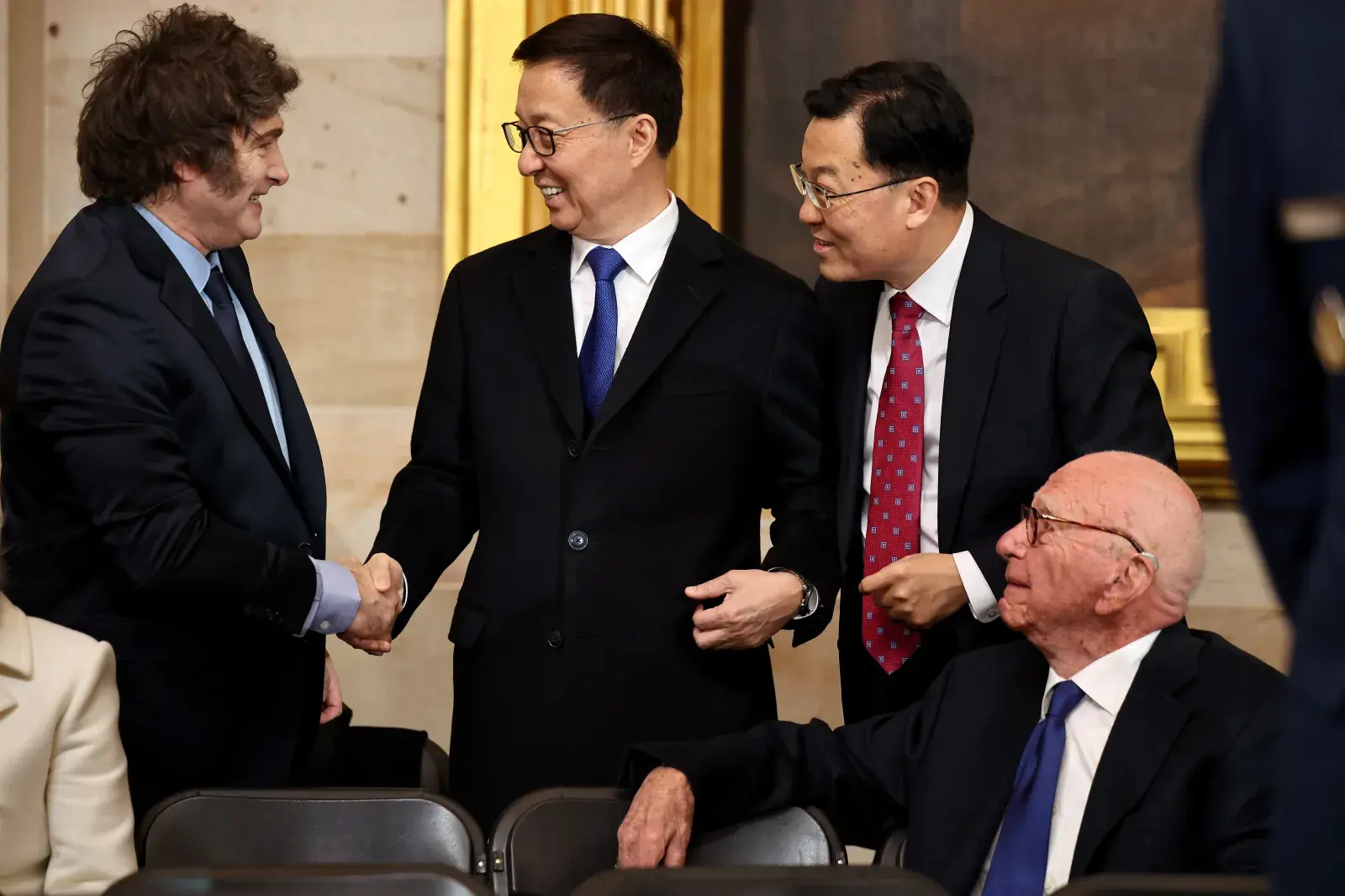-
Dyan Cannon, 88, clarifies viral ‘friends with benefits’ misunderstanding - 9 mins ago
-
Caesars Sportsbook Promo Code NEWSWK20X: Claim Top NFL Week 5 Sign-Up Bonus - 19 mins ago
-
'These games come down to one or two plays' — Alex Rodriguez on Mariners Game 1 loss to Tigers - 32 mins ago
-
Zac Brown engaged to Kendra Scott, plans to blend their families together - 49 mins ago
-
Vikings’ Carson Wentz Questionable to Return With Concerning Injury - 58 mins ago
-
South Africa vs. USA: How to Watch, Odds, U-20 Preview - about 1 hour ago
-
Alison Arngrim calls ‘Little House’ Season 3 episode creepy on podcast - about 1 hour ago
-
Kim Jong Un Announces North Korea Response to US Troop Deployment - 2 hours ago
-
New Caledonia vs. France: How to Watch, Odds, U-20 Preview - 2 hours ago
-
Lions Get Brutal Injury News Hours Before Bengals Matchup - 2 hours ago
White House in a Bind as Soybean Sales to China Plummet to Zero
A photographer’s snapshot of Treasury Secretary Scott Bessent at the United Nations General Assembly last week revealed a private message that captured the Trump administration’s deepening concern over collapsing U.S. soybean exports to China—a crisis now entangled with a controversial economic bailout of Argentina.
“Finally – just a heads up, I’m getting more intel, but this is highly unfortunate,” read the message, which appeared to be sent from Agriculture Secretary Brooke Rollins. “We bailed out Argentina yesterday (Bessent) and in return, the Argentine’s [sic] are removing their export tariffs on grains, reducing their price, and sold a bunch of soybeans to China, at a time when we would normally be selling to China. Soy prices are dropping further because of it. This gives China more leverage on us.”
Rollins added: “On a plane but Scott I can call you when I land.”
The photo, taken by Angelina Katsanis for the Associated Press, quickly circulated across social media, particularly in Argentina, where soybean exports have indeed surged in the wake of new economic aid from the U.S.
The missive has also drawn new scrutiny to the Trump administration’s pledge to support Argentina with a possible $20 billion swap line and direct U.S. purchases of government debt. Days after the deal, Chinese importers bought more than a million metric tons of Argentine soybeans just as the American harvest season began.
“This is a five-alarm fire for our industry,” said Caleb Ragland, a Kentucky farmer and president of the American Soybean Association, in an interview with the Associated Press. “We’ve had your back, President Trump. We need you to have ours now.”
No Buyers in Beijing
China, once the largest buyer of American soybeans, has not purchased a single shipment since May, according to U.S. Department of Agriculture data. In 2024, China bought $12.5 billion of the $24.5 billion worth of soybeans the U.S. exported globally—more than 50 percent. For months now, the figure has been zero.
Soybeans account for 14 percent of all U.S. agricultural exports, making them the top food export by value. Farmers and trade officials say the loss of the Chinese market is not only destabilizing current revenues, but also threatening the long-term viability of American farms built to meet Chinese demand.
“We cannot replace a China in one shot,” said Iowa farmer Robb Ewoldt, a director with the United Soybean Board. “It’s not going to happen. We need to be realistic in that.”

Farmers are already facing storage shortages as corn and soybeans stack up with no clear buyer. “Each week, the Agriculture Department publishes a summary of the latest exports of American crops. Lately, they have all been missing the same thing: The sale of soybeans to China,” The New York Times reported last week. Overall U.S. soybean exports are down 23 percent year-over-year.
“Farmers are suffering terrible losses,” Jennifer Fahy, co-executive director at Farm Aid, a nonprofit organization advocating for farmers, told Newsweek, adding that these are “not economic blips, but potentially long-term or permanently lost markets due to ricocheting tariffs.”
“They [farmers] are telling us they’re losing $100 to 200 an acre this year,” she said.
China, meanwhile, has turned decisively toward South America. Chinese companies have secured 12 million metric tons of soybeans from Brazil and Argentina for delivery through October, entirely skipping U.S. suppliers during their primary marketing window.
“China’s heavy Q3 soybean purchases suggest the industry has built up inventories ahead of potential Q4 supply risks,” said Wang Wenshen, an analyst at Sublime China Information, in an interview with Reuters.
Crop Diplomacy
Even with U.S. soybeans trading $40 per ton cheaper than Brazilian cargoes, Beijing’s 34 percent tariff makes them uncompetitive. A growing number of farmers are now bracing for what they describe as a second wave of losses, unless negotiations yield a breakthrough.
“We’re going to take some of the tariff money — relatively small amount, but a lot for the farmers — and we’re going to help the farmers out a little bit,” Trump said last week, acknowledging the predicament with a voting bloc that heavily skews Republican. Yet no formal plan has been announced, and he appeared to confuse “millions” and “billions” when describing the potential aid.
Many farmers remain skeptical of another bailout. While Trump has said tariff revenue could be returned to farmers “soon,” those same tariffs are already driving up the cost of essentials like fertilizer, pesticides, herbicides,and steel—raising prices on everything from crop inputs to machinery.
“We don’t want aid payments,” Brian Warpup, a fourth-generation farmer in Indiana, told the AP. “We want to work. The worst thing that we could ever want is a handout.”
Kentucky’s Ragland said his priority is a long-term trade solution. “Our priority remains seeing the United States secure lasting trade agreements—particularly with China—that allow farmers to sell their crops and build a sustainable future with long-term customers,” he said.

The crisis is rooted in China’s strategy of using soybean purchases as leverage in trade negotiations. “That’s why China is targeting soybeans and other agricultural products,” said Jim Sutter, CEO of the U.S. Soybean Export Council. “They know farmers have a strong lobby.”
While efforts are underway to expand other markets—Taiwan has pledged $10 billion in U.S. agricultural purchases over four years—the scale of China’s demand will be difficult to match. Domestic uses such as biodiesel and animal feed are helping absorb the glut, but only incrementally.
Senate Majority Leader John Thune acknowledged that farmers will need federal support. “We’ve got a big harvest coming in… and no place to go with it,” he told NBC News. “They are anxious. They want to see markets open up.”
For now, as soybeans ripen in the fields of Magnolia, Kentucky, and across the Midwest, farmers are left watching South American exports replace them—and hoping that someone in Washington answers Rollins’ call — or text — to action.
Source link


























